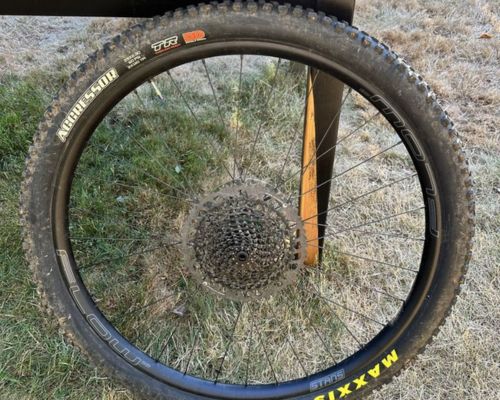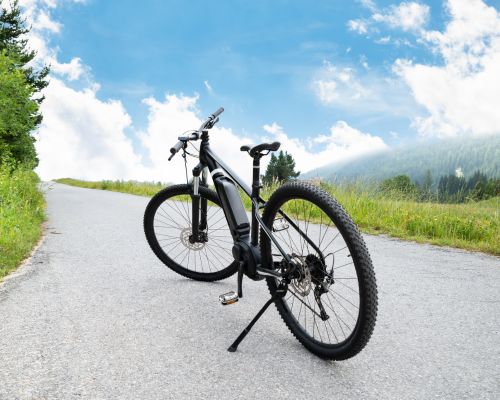Can You Put Road Tires on Mountain Bikes? (SAFE or NOT)
Off-road mountain bikes are designed specifically for tackling rugged terrain and are equipped with robust components to withstand the challenges. Despite this, many bikers are now venturing off the beaten path and riding their mountain bikes on regular roads.
This raises the question: Can you ride a mountain bike with road tires without sacrificing comfort? Curious to know? I thought so.
For those new to biking, finding an answer may seem confusing. But fear not, we’re about to explore a controversial topic that has sparked debates among riders and provide you with detailed explanations and essential knowledge for the same.
So, without any further ado, let’s address the burning question.
Can you Put Road Tires on Mountain Bikes?
Absolutely! The answer to this question is a definite “Yes.” You can put road tires on mountain bikes whenever you desire, but there are a few factors to consider for a more comfortable ride. Typically, a mountain bike has tires that offer excellent traction for off-road conditions. Using MTB tires on regular roads will feel different. However, if you switch to smoother tires, you can enjoy a more comfortable ride on normal road surfaces.
However, it’s important to note that this process is not as simple as it sounds. Several other factors must be considered to ensure the tire fits properly on the bike and performs well during your ride.
Want to know what factors to consider? Keep reading. You’re on the right track.
Putting Hybrid Tires on Mountain Bikes
Hybrid tires in mountain biking combine off-road capability with on-road performance, offering a versatile riding experience on trails and paved surfaces. Using hybrid tires on a mountain bike is possible, but it depends on one crucial factor: compatibility. It is necessary for mountain bike rims to be able to accommodate road tires, and the drivetrain should have the appropriate road cluster.
Typically, road bike tires are narrower, necessitating smaller rims, while mountain bike clusters are broader and larger than road bikes. However, wheels are designed to suit mountain bike clusters and rims or road bike clusters and rims. You require a bike cluster paired with road rims to install road tires on a mountain bike.
Regrettably, most wheels are not constructed in this specific manner, necessitating a custom build. This process is challenging, time-consuming, and impractical due to the precise tuning required. Building the desired wheels entails purchasing a rim, spokes, hub, and the necessary tools. Alternatively, seeking out a professional specializing in wheel customizations is an option, but it is still expensive.
Choosing the Best Road Tires for your MTB
You need the right mountain bike road tires to ride comfortably, easily, and speedily. There are several factors to consider when choosing a tire, such as its tread pattern, width, size, and type. You can find road tires that optimize on-road performance by evaluating these elements.
Type of Tire
When it comes to tires, there exist three primary types: tubular, tubeless, and clincher. Tubular tires, known for their lightweight construction, provide a comfortable ride, making them a favorite in racing. However, they come with a price tag.
On the other hand, tubeless tires have emerged as a recent addition to road bikes. They boast a reduced risk of pinch flats thanks to using liquid sealants instead of tubes. With lower tire pressures, they offer enhanced comfort and require minimal maintenance.
Clincher tires, considered more traditional, incorporate an inner tube that can easily be replaced in a flat tire. Among the highly regarded options are the AR-PRO Shock Proof and Explosion Proof Road Bike Inner Tubes. These sleek tires, suitable for mountain bikes, boast user-friendly installation without bulky tools. Additionally, they provide shockproof and explosion-proof qualities, further enhancing their appeal on the market.
Correct Road Tire Size
When selecting street tires for your MTB, the next key factor is the tire size. Narrow tires prioritize efficiency, while wider tires offer improved control and traction. Additionally, wider tires provide enhanced comfort and the ability to ride at lower pressures, minimizing the risk of pinch flats. For regular road usage, opt for tires with widths ranging from 23mm, 25mm, 28mm, to 32mm. These options cater to different preferences and terrain conditions, ensuring a well-rounded riding experience on the streets.
Tire Tread
Tire tread refers to the pattern on the surface of a tire that provides grip and traction. It is critical in maintaining stability and control while riding on various terrains.
When riding on smooth surfaces like concrete or asphalt, opt for smooth tires as they provide superior grip due to a larger contact area with the ground. Treaded tires, although suitable for rough roads and gravel, are thicker and heavier. Experts suggest the Continental Tour Ride 26″ x 1.75 Bike Tires for rough road riding. This pair of tires offer puncture protection, a maximum PSI of 58, and versatility across different surfaces.

Advantages of Using Road Tires on Mountain Bikes
Ready to take your mountain biking adventures to the next level? Let’s talk about the amazing benefits of road tires on your trusty mountain bike: provide smoother rides, increased speed, and better control on paved surfaces. Sounds exciting, right?
First, road tires are designed to be super smooth and have lower rolling resistance than typical mountain bike tires. This means you can pedal faster and ride more efficiently, perfect for commuters or those craving speedy journeys.
But it doesn’t stop here! These road tires offer fantastic grip on smooth roads, thanks to their large contact area with the ground. This means improved stability and control, allowing you to conquer corners and zoom through turns confidently.
Not to mention the weight advantage! Road tires are lighter than mountain bike tires. This lighter weight adds agility and responsiveness to your ride, making acceleration and handling effortless.
Last but not least, comfort matters! Road tires provide a more comfortable riding experience on paved roads. Their smooth tread and higher tire pressure absorb less vibration, resulting in less fatigue and silky-smooth ride quality.
Road Tires Will Increase the Speed of MTB?
Road tires can transform your mountain bike into a speed machine. With higher tire pressure, reduced rolling resistance, and lighter weight, road tires will have you flying down the road faster than ever before. Take your MTB to higher speeds and enjoy the thrilling rush of increased speed.
Tips on Getting More Speed on my MTB
For improved speed, it is worth considering locking up your suspension. While a full suspension setup excels at absorbing drops and rocky surfaces, it can reduce some of your pedaling efficiency due to inherent movement. Another valuable technique involves increasing your tire pressure.
In my experience, I have safely inflated my heavy-tread mountain bike tires up to 50 psi. It is essential, however, to exercise caution as this adjustment may reduce traction on off-road terrains.
Tips to Make Your MTB Road Drive Worthy
If you plan on doing a lot of road cycling on your mountain bike, there are a few adjustments worth considering. One option is to lower your handlebars, which reduces wind resistance. While mountain bikes typically feature higher bar settings for off-road control and handling, lowering them mimics road bike design and promotes streamlined riding on paved surfaces.
This quick and simple change allows you to adjust the handlebars to your desired height whenever necessary. Additionally, you may need to adjust your seat height for optimal comfort and performance. Gradually raise the seat in small increments until you find the right balance, avoiding excessive height that may cause your hips to rock uncomfortably.
To enhance safety during travel, consider adding a rearview mirror to watch traffic approaching from behind. While this may seem unusual for off-road mountain biking enthusiasts, prioritizing safety becomes crucial when regularly using your bike for commuting purposes.
Furthermore, equipping mud flaps and fenders can be a smart move if you often ride in adverse weather conditions. These accessories protect you from splashes and dirt, ensuring you arrive relatively clean and presentable at your destination. Look for aftermarket mud flaps and fenders that are easy to install and remove based on your needs and preferences.
Final Thoughts
You can transform your mountain bike into a road-ready companion by simply swapping your tires and adjusting the suspension, wheel gearing, and handlebars. These modifications are relatively straightforward and can be accomplished at home.
However, before switching from a mountain bike to a road bike tire, you should know the limitations of efficiency and handling. Choose the bike and the tire that suits your terrain and cycling goals.







